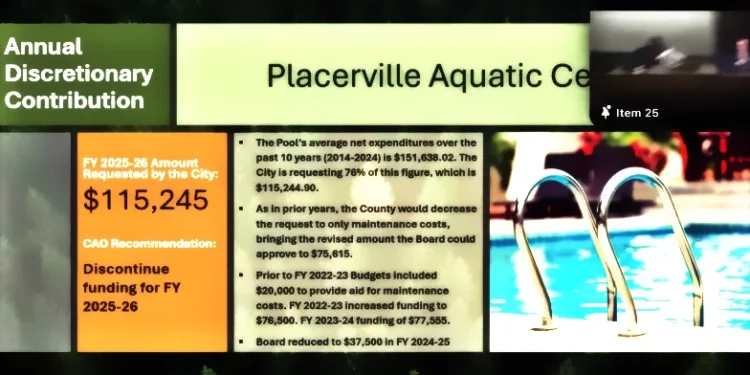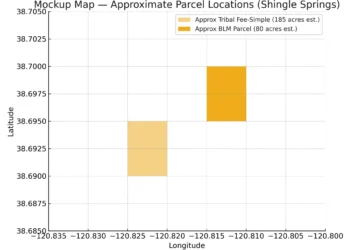By Cris Alarcon, InEDC Writer. (April 8, 2025) — PLACERVILLE, Calif. — The Placerville Aquatic Center, a vital community resource, is at risk of closure following recent budgetary decisions by the El Dorado County Board of Supervisors. Historically, the county has provided financial assistance to the city for the pool’s operation and maintenance, acknowledging its use by residents both within and outside city limits.
In the current budget cycle, the City of Placerville has requested $115,244 in county aid—approximately 76% of the pool’s average net expenditures over the past ten fiscal years (FY 2014–2024), which total $151,636.02 annually. However, the County Board has historically revised the city’s request to cover only maintenance costs. If precedent holds, the amount approved may be reduced to $75,815.
Prior to FY 2022-23, county contributions were minimal, averaging $20,000 annually for maintenance. That changed two years ago, when the Board of Supervisors increased funding to $76,500 in FY 2022-23, and slightly more—$77,565—for FY 2023-24 (El Dorado County Legistar).
Now, however, funding for the upcoming fiscal year remains uncertain. In a broader move to address a projected budget shortfall, the Board has voted to cut approximately $868,567 from its allocations to community-serving agencies, including Visit El Dorado and the El Dorado County Film Commission.
The potential loss of county funding for the Aquatic Center places the city in a difficult position. City officials warn that without support, they may be forced to close the pool altogether. The Aquatic Center serves hundreds of families annually, providing swim lessons, public swim hours, youth training, and senior therapy programs.
“This pool is more than a recreational space,”
said one city official during Tuesday’s meeting.
“It’s where our children learn to swim and our seniors stay active. Losing it would be a tremendous setback.”
This situation offers a pointed lesson for residents of El Dorado Hills, where conversations about cityhood have gained traction. Advocates for incorporation argue that becoming a city would allow El Dorado Hills to retain more of its tax base—currently estimated to contribute nearly 30% of the county’s general fund—and reinvest in local services.
However, the case of Placerville illustrates the complexities of municipal management. With cityhood comes the burden of fully funding services like parks, law enforcement, and public infrastructure—without the financial buffer of county aid.
As El Dorado Hills weighs its future, Placerville’s struggle underscores the importance of long-term fiscal planning, community engagement, and shared responsibility in preserving public resources.










